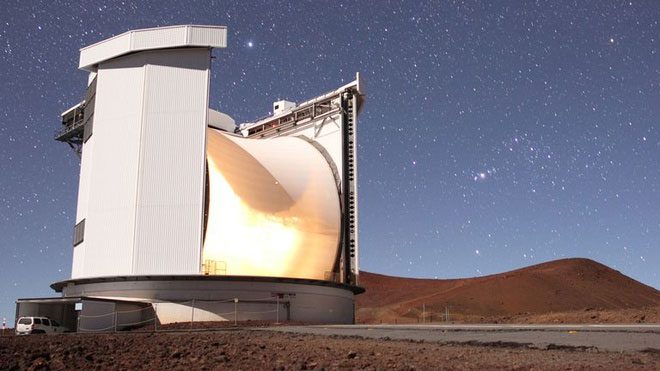In 1978, the United States National Aeronautics and Space Administration (NASA) had the opportunity to search for signs of life on Venus. However, this discovery went unnoticed until today.
A scientific study published in the journal Nature Astronomy has announced the discovery of phosphine, a toxic gas thought to be a sign of microbial life, existing in the upper atmosphere of Venus.
Previously, research had mainly focused on Mars and some celestial bodies orbiting Jupiter and Saturn. Venus, known for its harsh natural conditions, often received less attention in the search for extraterrestrial life.
Astronomers have found signs that microorganisms, unlike any on Earth, may be thriving in the clouds of Venus.
Although the surface of Venus has an average temperature of 464 degrees Celsius—too hot to sustain life—the planet’s oxygen-free clouds could harbor many forms of microorganisms different from those on Earth due to their much lower temperatures.
According to Sky News, this hypothesis is further supported by the latest findings from an international team of astronomers led by Professor Jane Greaves from Cardiff University (UK). They discovered that high-altitude clouds on Venus contain phosphine gas.
On Earth, this gas is produced by bacteria living in similar anoxic environments.

Scientists discover phosphine in the atmosphere of Venus. (Image: ESO).
The phosphine (PH3) molecules were first detected on Venus using the James Clerk Maxwell Telescope (JCMT), located near the summit of Mauna Kea in Hawaii. The scientific journal Nature Astronomy has just published the team’s research.
“The experiment stemmed purely from curiosity, utilizing the cutting-edge technology of JCMT.”, Greaves stated.
“I thought the team would eliminate the most unlikely scenarios, such as clouds being filled with living organisms. When we noticed the first signs of phosphine in the Venusian spectrum, we were shocked.”, she added.
After confirming the existence of phosphine in Venus’s clouds, the research team began calculating its origin. Since no one understood the prevalence of phosphorus on Venus, they could not rule out the possibility of a natural process occurring.
However, based on research by William Bains, a member of the Massachusetts Institute of Technology (MIT), regarding natural phosphine production methods, there seems to be almost no way to explain the amount detected in Venus’s atmosphere.

James Clerk Maxwell Telescope (JCMT), located near the summit of Mauna Kea in Hawaii. (Image: Will Montgomerie).
To produce the amount of phosphine detected on Venus, Earth-based organisms would need to emit gas at about 10% of their maximum productivity, according to calculations by Paul Rimmer from Cambridge University.
If microbial life exists on Venus, it would operate very differently than on Earth. They would need to survive in the planet’s super-acidic clouds, which are composed almost entirely of sulfuric acid.
On Earth, bacteria produce phosphine by absorbing phosphate minerals and adding hydrogen. This is a mysterious natural process because it causes bacteria to lose energy instead of gaining it.
This raises questions about the evolutionary purpose of the species. Some scientists believe that phosphine is a waste product from another process, while others think it may serve as a mechanism to repel competitors of the bacteria.
Prior to JCMT’s discovery, the Japan Aerospace Exploration Agency (JAXA) recorded mysterious dark streaks on the surface of Venus that absorbed ultraviolet light.
The combination of these two discoveries suggests that the dark streaks may represent populations of microorganisms, existing under conditions of 30 degrees Celsius and sulfuric acid concentrations up to 90% in the high clouds.
“The key question in science is whether life exists beyond Earth. The discovery by Jane Greaves and her team is a significant step toward this mission.”, stated Professor Emma Bunce, President of the Royal Astronomical Society, urging the world to initiate a research mission to Venus.
In another study, Professor Jane Greaves (an astronomer at Cardiff University) presented preliminary observations from the Green Bank Telescope indicating the presence of ammonia. Ammonia is a gas on Earth produced by industrial processes or bacteria converting nitrogen.
While both of these discoveries are intriguing, scientists remain cautious. Professor Nikku Madhusudhan (an astrophysicist at Cambridge University), who was not involved in the research, stated that more data is needed to confirm the results. “If they can definitively confirm the presence of phosphine and ammonia, then the likelihood that they have a biological origin will be higher,” Professor Madhusudhan noted.
Despite Venus’s harsh surface environment, at altitudes of about 50 km, the temperature and pressure are more akin to conditions on Earth, potentially allowing for the existence of microbial life. Dr. Robert Massey (Deputy Executive Director at the Royal Astronomical Society) remarked: “These are very exciting findings, but it must be emphasized that the results are preliminary and require further research.” However, Dr. Massey also expressed excitement: “It is fascinating to think that these findings could be signs of life or some unknown chemical processes. It will be interesting to see what deeper studies uncover in the coming months and years.”


















































